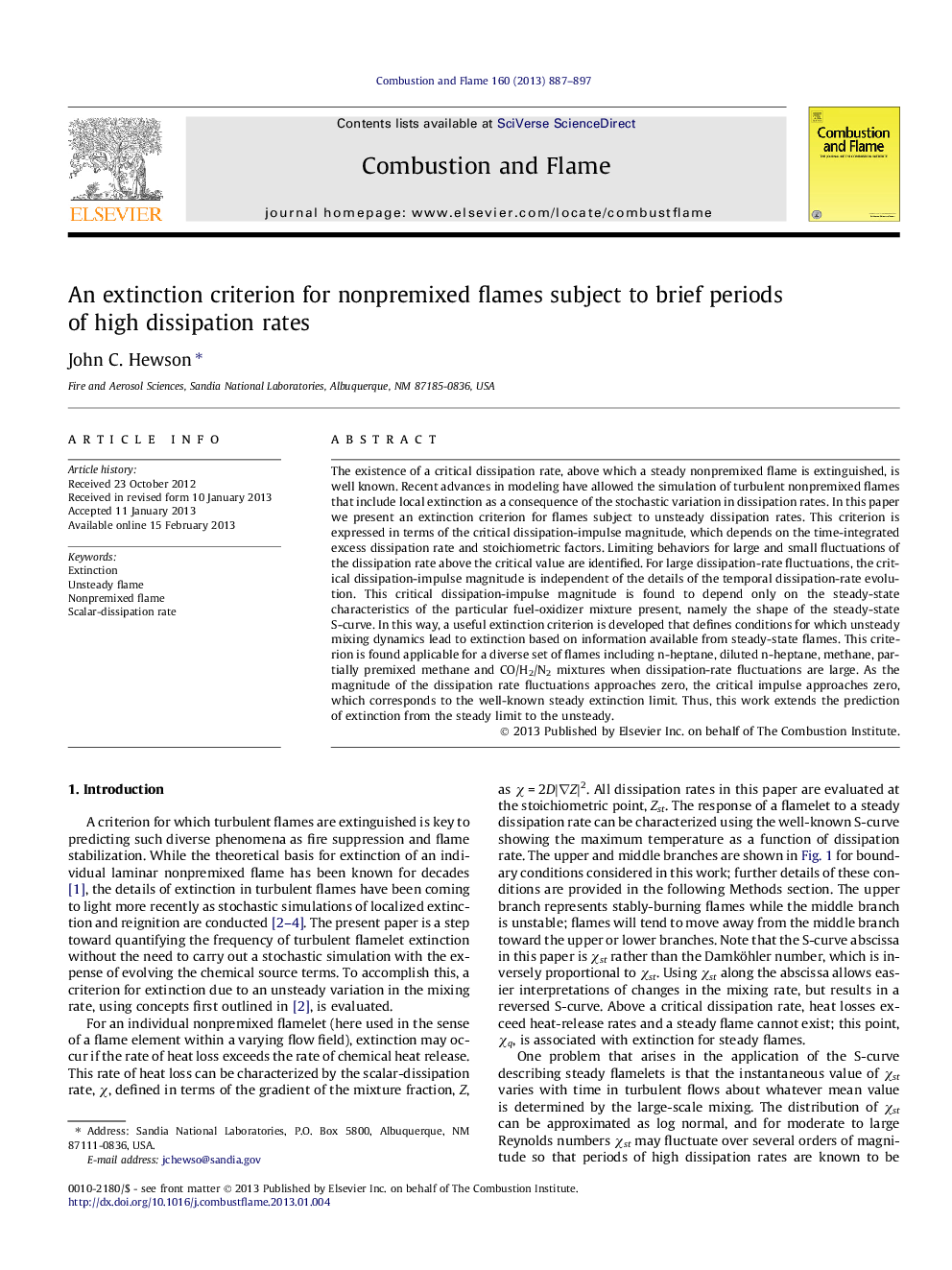| Article ID | Journal | Published Year | Pages | File Type |
|---|---|---|---|---|
| 166446 | Combustion and Flame | 2013 | 11 Pages |
The existence of a critical dissipation rate, above which a steady nonpremixed flame is extinguished, is well known. Recent advances in modeling have allowed the simulation of turbulent nonpremixed flames that include local extinction as a consequence of the stochastic variation in dissipation rates. In this paper we present an extinction criterion for flames subject to unsteady dissipation rates. This criterion is expressed in terms of the critical dissipation-impulse magnitude, which depends on the time-integrated excess dissipation rate and stoichiometric factors. Limiting behaviors for large and small fluctuations of the dissipation rate above the critical value are identified. For large dissipation-rate fluctuations, the critical dissipation-impulse magnitude is independent of the details of the temporal dissipation-rate evolution. This critical dissipation-impulse magnitude is found to depend only on the steady-state characteristics of the particular fuel-oxidizer mixture present, namely the shape of the steady-state S-curve. In this way, a useful extinction criterion is developed that defines conditions for which unsteady mixing dynamics lead to extinction based on information available from steady-state flames. This criterion is found applicable for a diverse set of flames including n-heptane, diluted n-heptane, methane, partially premixed methane and CO/H2/N2 mixtures when dissipation-rate fluctuations are large. As the magnitude of the dissipation rate fluctuations approaches zero, the critical impulse approaches zero, which corresponds to the well-known steady extinction limit. Thus, this work extends the prediction of extinction from the steady limit to the unsteady.
